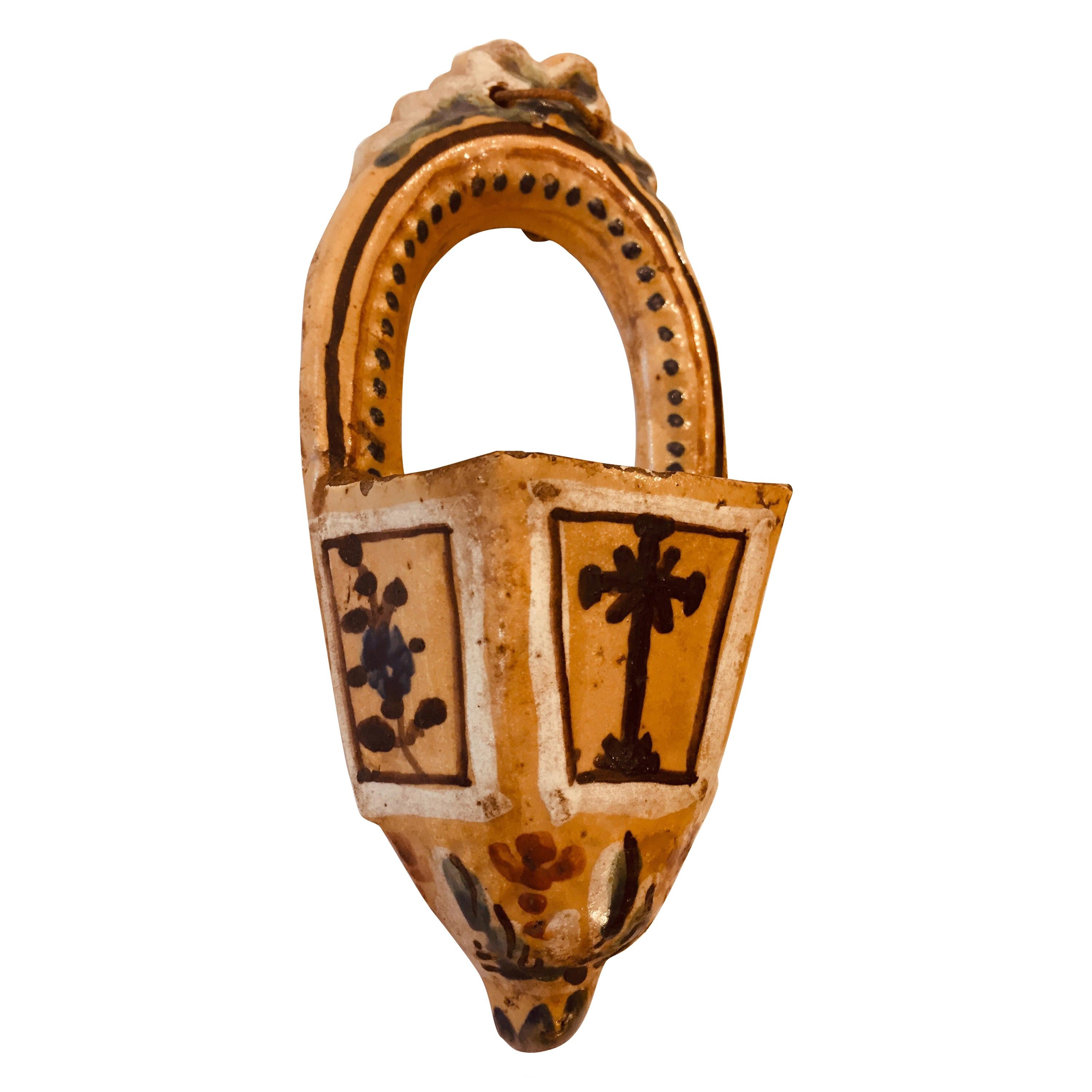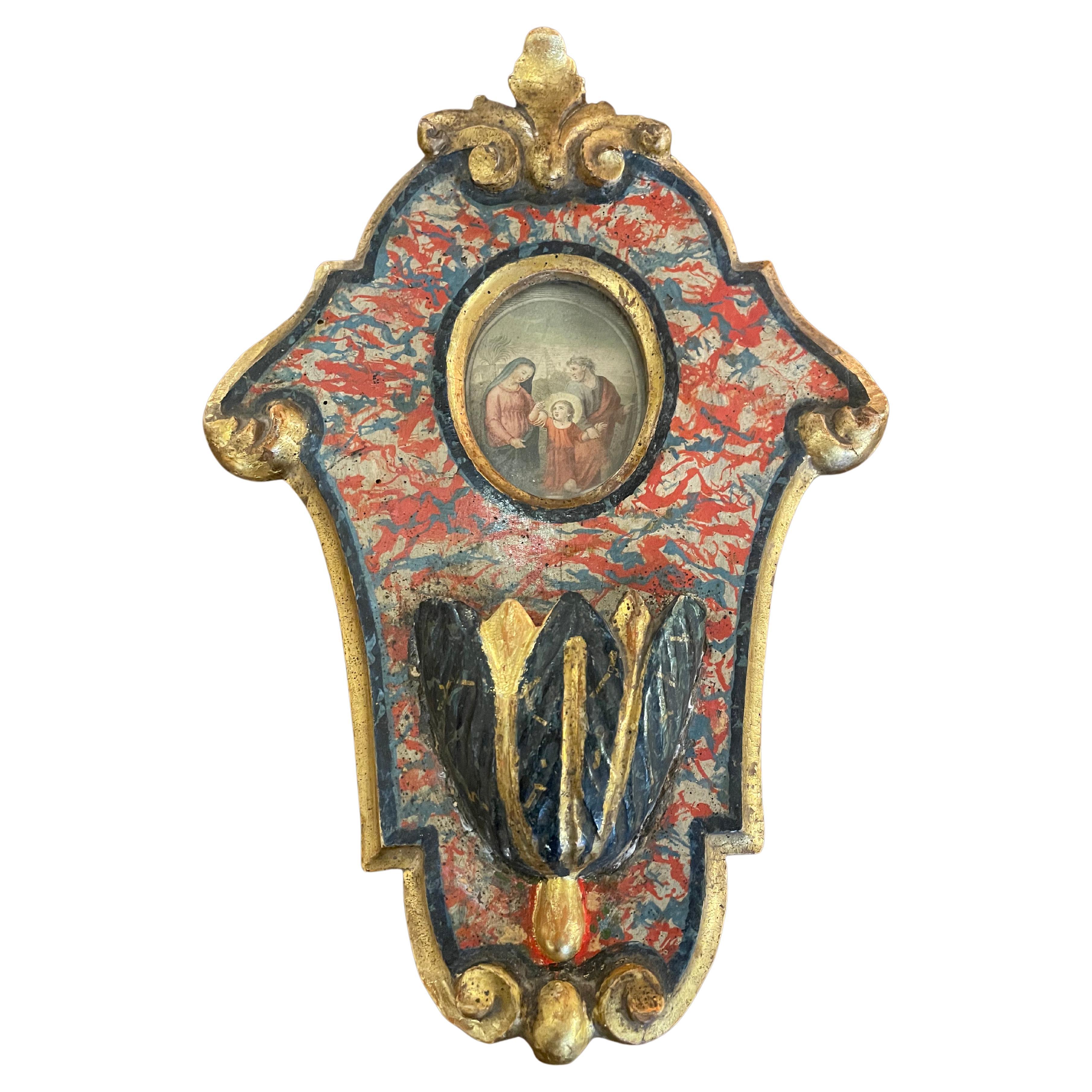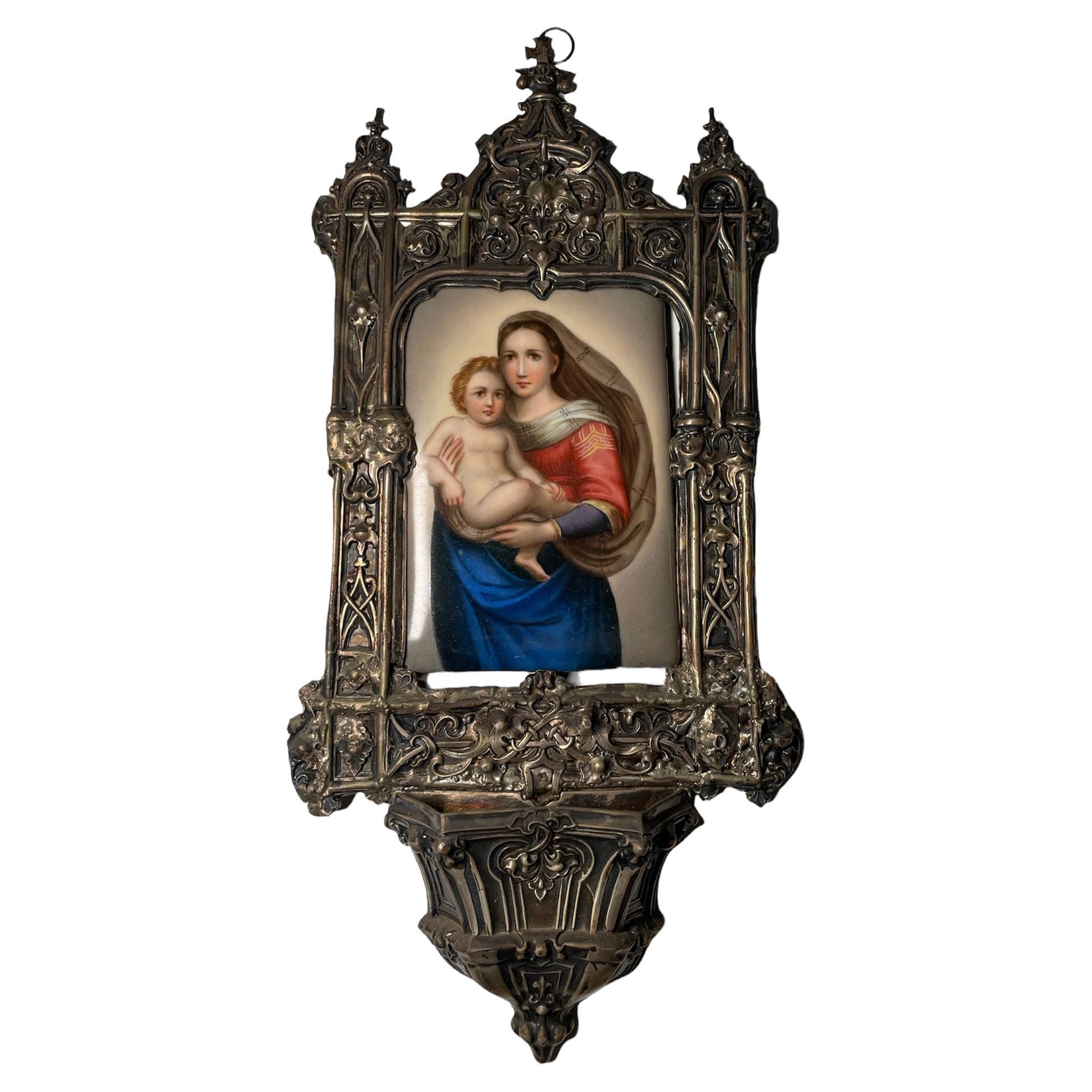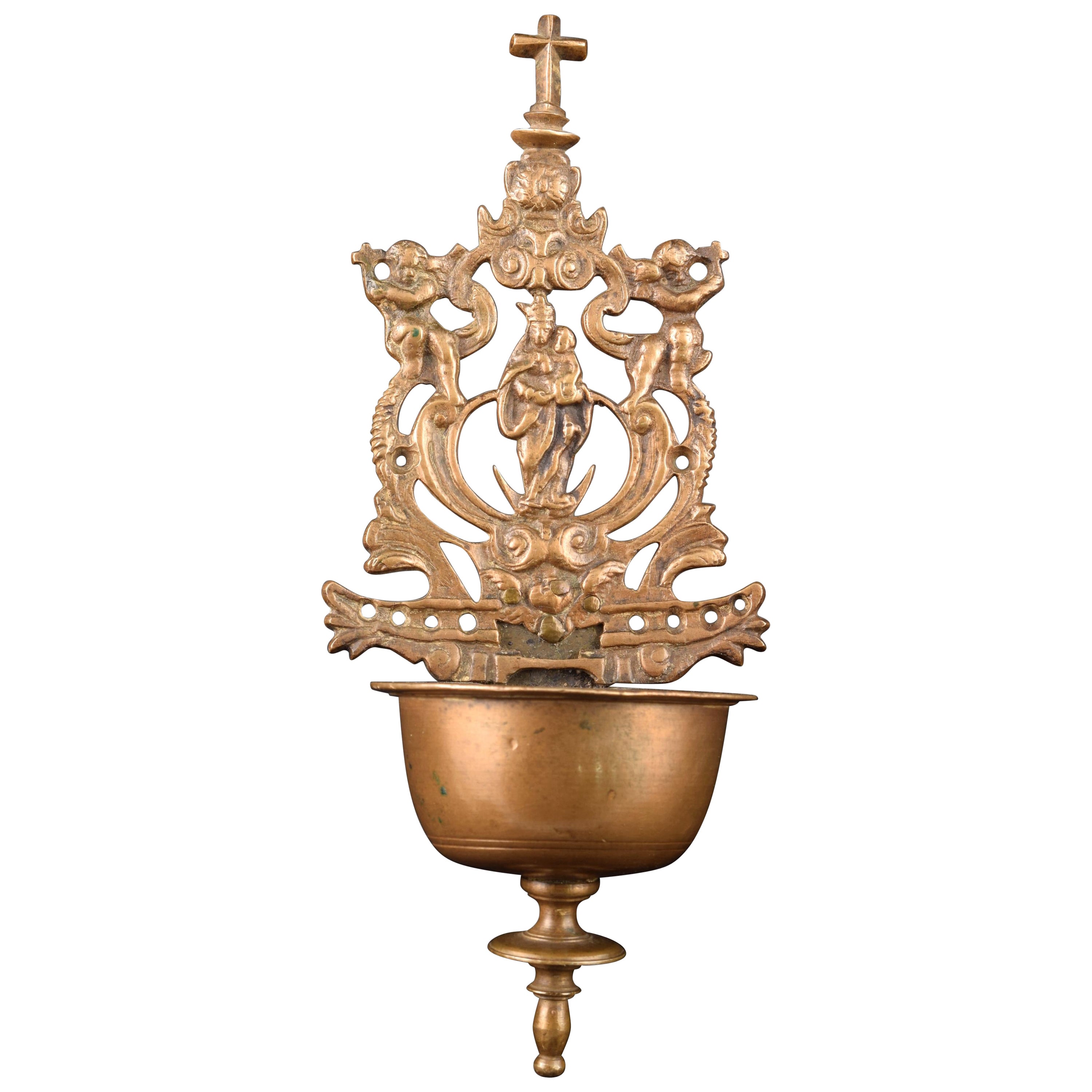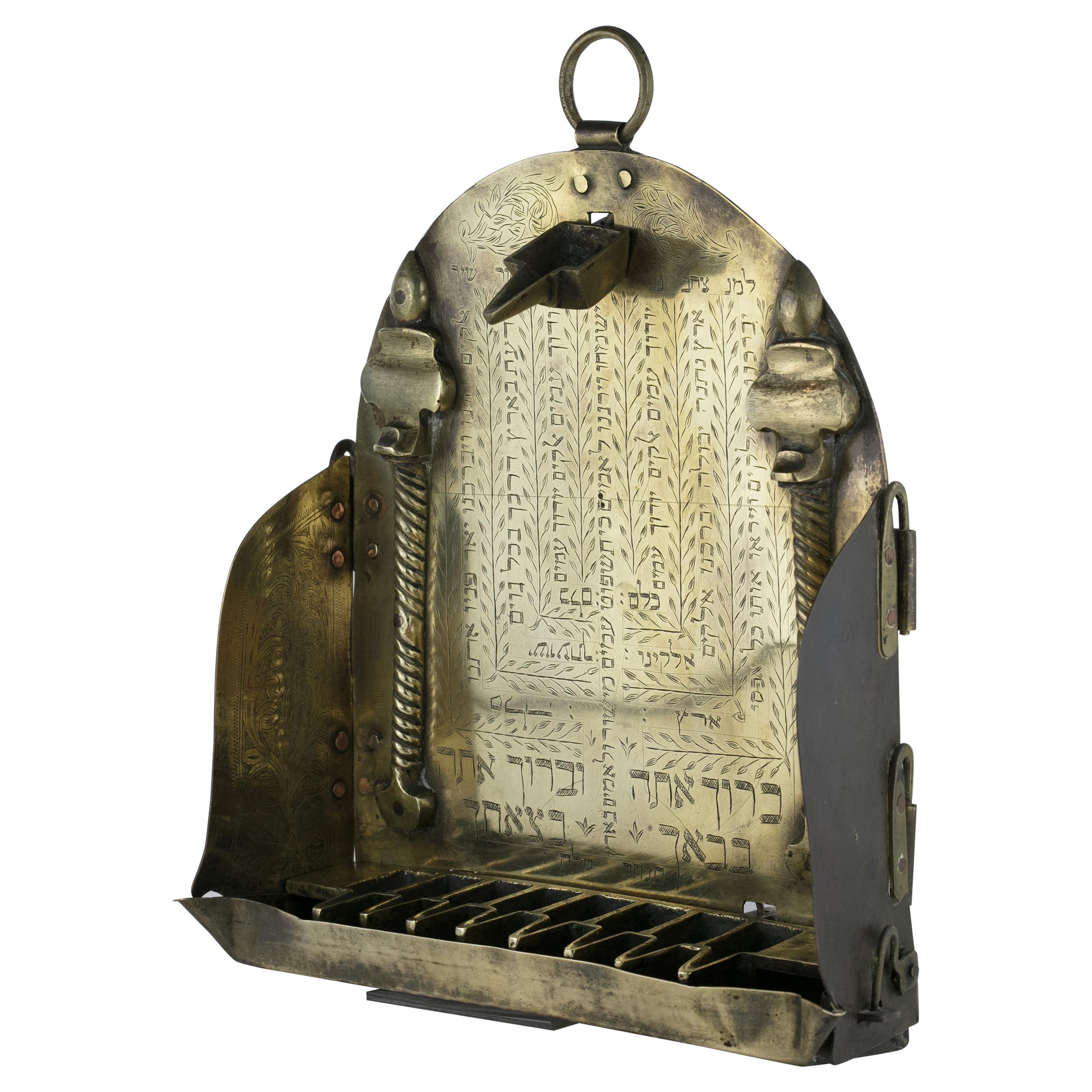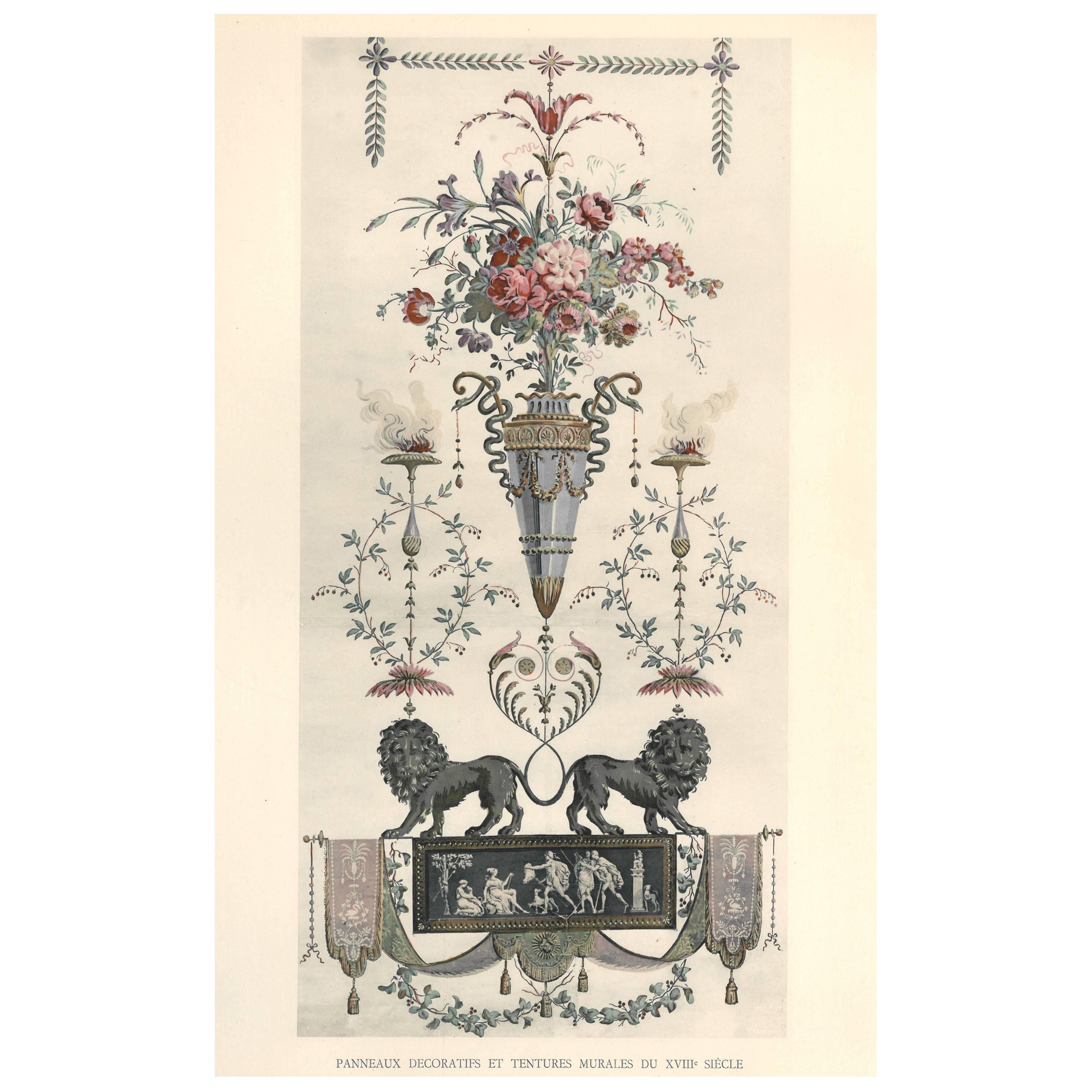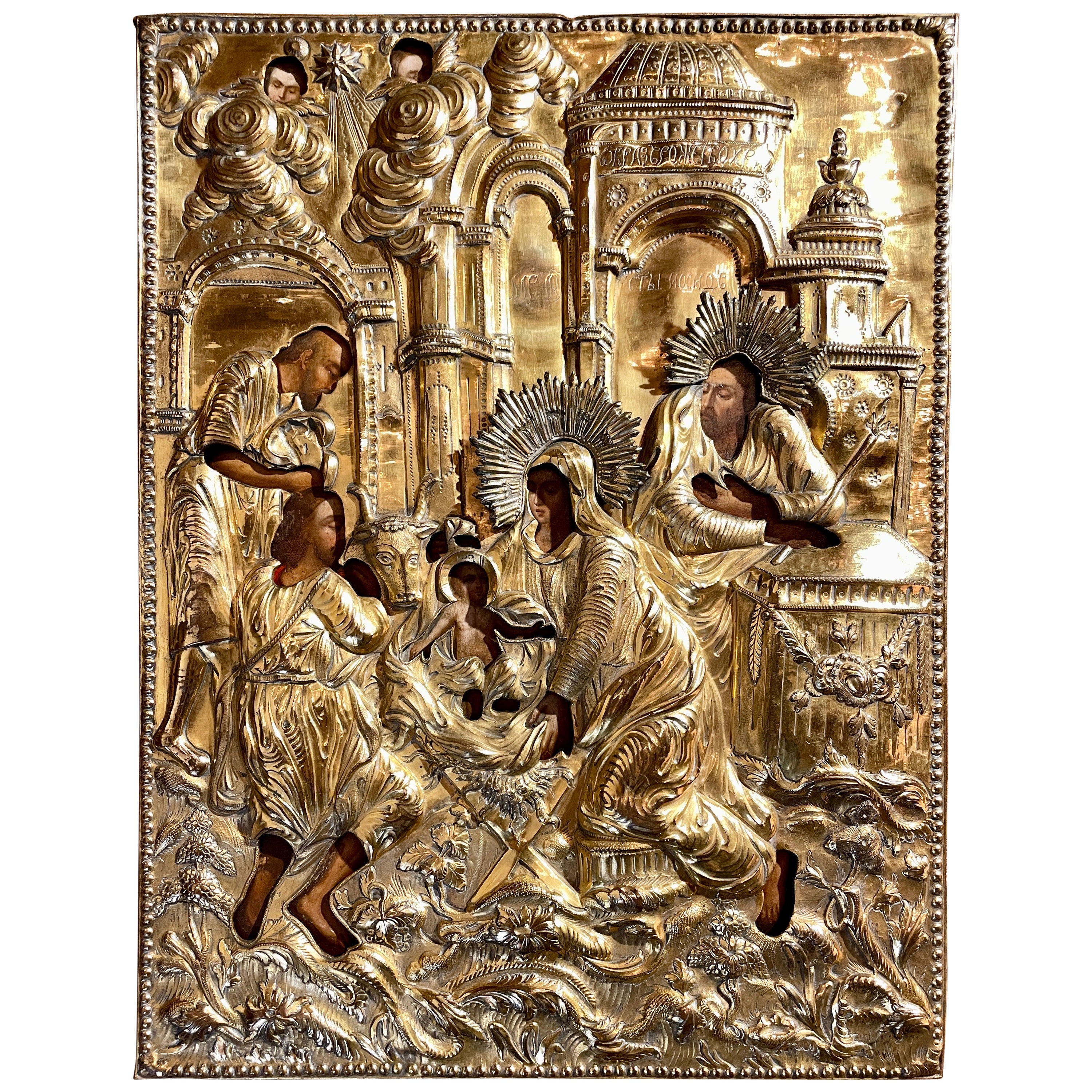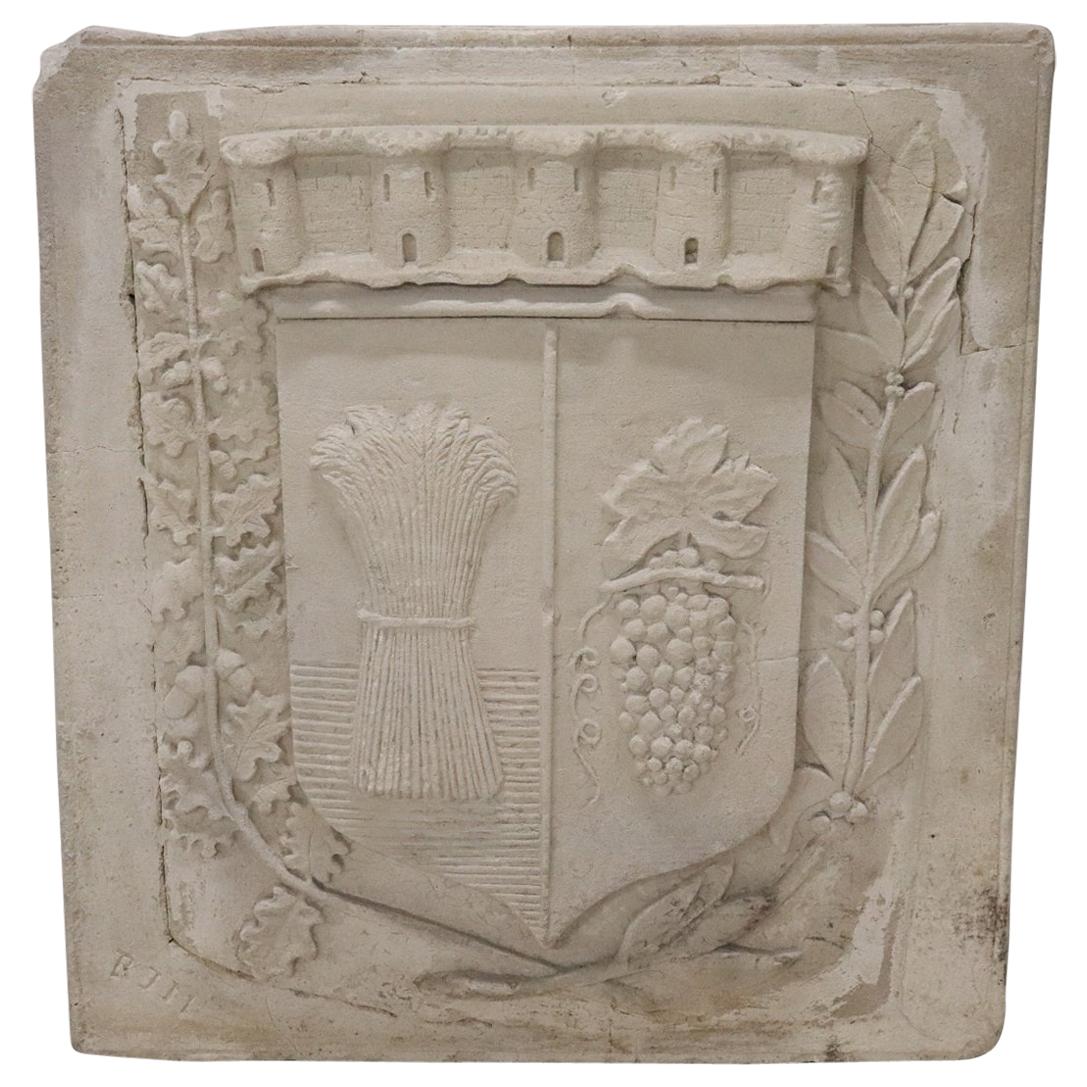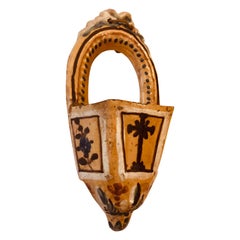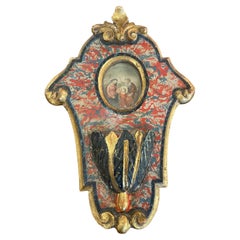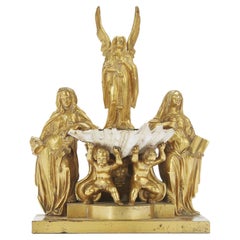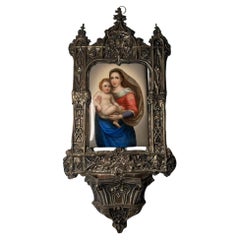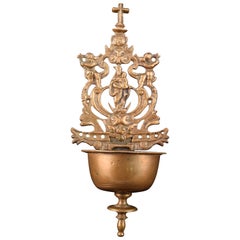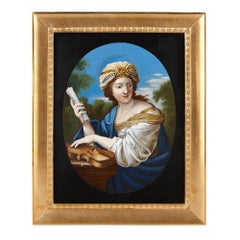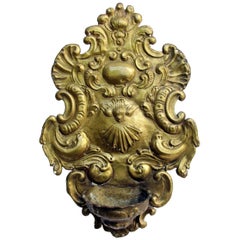
Early 19th Century Repoussé Brass Holy Water Font Made in Italy
View Similar Items
Want more images or videos?
Request additional images or videos from the seller
1 of 9
Early 19th Century Repoussé Brass Holy Water Font Made in Italy
About the Item
- Dimensions:Height: 10.24 in (26 cm)Width: 7.09 in (18 cm)Depth: 2.37 in (6 cm)
- Style:Neoclassical (Of the Period)
- Materials and Techniques:Brass,Repoussé
- Place of Origin:
- Period:
- Date of Manufacture:circa 1810
- Condition:Wear consistent with age and use.
- Seller Location:Milan, IT
- Reference Number:Seller: 28641stDibs: LU216038913423
About the Seller
5.0
Gold Seller
These expertly vetted sellers are highly rated and consistently exceed customer expectations.
Established in 1990
1stDibs seller since 2016
164 sales on 1stDibs
Typical response time: 1 hour
Associations
International Confederation of Art and Antique Dealers' Associations
More From This SellerView All
- Early 19th Century Italian Majolica Holy Water FontLocated in Milan, ITSmall and lovely Italian Holy Water font from Italy, a shaped polychrome ceramic artwork dating back to Neoclassical period, early 19th century. This rare religious work is finely ...Category
Antique Early 19th Century Italian Neoclassical Decorative Art
MaterialsMaiolica, Majolica
- 18th Century Italian Hand-Carved Polychrome GIlt Holy Water FontLocated in Milan, ITFrom Italy, Marche central region, a polychrome carved holy water font mid-18th century, a shaped panel with carved and gilt scrolls and acanthus leaf details. A green edge decoratio...Category
Antique Mid-18th Century Italian Rococo Decorative Art
MaterialsPoplar
- 19th Century Italian Gilded Holy Water Font with Putti Angel Saints and ShellLocated in Milan, ITFrom Italy a stunning gilt bronze holy water font dating back to the first half of 19th century. An ormolu group sculpture depicting an unusual ...Category
Antique Mid-19th Century European Neoclassical Religious Items
MaterialsBronze
- Pair of Miniature Lady Portraits 19th Century French SchoolLocated in Milan, ITA lovely pair of portrait miniatures of two ladies, by a French skillful artist who painted in fine pointille technique on paper this pair of portraits in the 1870s circa. Set in tw...Category
Antique Late 19th Century French Louis Philippe Models and Miniatures
MaterialsBrass
- 17th Century Italian Faience Madonna with Child Relief Wall PlaqueLocated in Milan, ITA fashinating 17th century Italian Virgin with Child, an hand-made rectangular shaped relief devotional plaque in polychrome glazed terracotta depicting a Madonna with Child, dating ...Category
Antique Mid-17th Century Italian Renaissance Decorative Art
MaterialsTerracotta
- 19th Century Italian Carved Gilt Decorative Palmetta Fan Wall FriezeLocated in Milan, ITAn original hand-carved and leaf gilded wall frieze as a giltwood porta Palme vase with handles. It comes from a private residence of Milan, where it was topped with a wall demilune...Category
Antique Mid-19th Century Italian Neoclassical Wall Lights and Sconces
MaterialsGold Leaf
You May Also Like
- Wall Brass Holy Water Font Hand Painted Porcelain of the Sistine MadonnaLocated in Guaynabo, PRThis is a hand painted KPM style rectangular plaque of the Sistine Madonna framed in a wall brass holy water font. The brass frame depicts three arcs, two small semicircular in the s...Category
Early 20th Century Unknown Renaissance Decorative Art
MaterialsBrass
- Bronze Bassin for Holy Water, Spain, 17th CenturyLocated in Madrid, ESHoly wall font. Bronze. Spain, 17th Century. Small font for holy water designed to be placed on a wall, which has a container decorated with moldings and architectural elements and...Category
Antique 17th Century Spanish Baroque Religious Items
MaterialsBronze, Other
- 19th Century Italian Micromosaic Portrait PlaqueLocated in London, GBThe drama, movement and intensity of the High Baroque all find their way into this beautiful Italian micromosaic portrait plaque, which displays a...Category
Antique Late 19th Century Italian Baroque Decorative Art
MaterialsOrmolu
- Late 19th Century Moroccan Brass Hanukkah Lamp MenorahLocated in New York, NYHandmade hanging brass Hanukkah lamp Menorah, Tetuán, Morocco, circa 1880. Engraved above the oil fonts in Hebrew: “Blessed shall you be in your comings and blessed shall you be in y...Category
Antique Late 19th Century Moroccan Religious Items
MaterialsBrass
- Panneaux Decoratifs et Tentures Murales from 18th and Early 19th Century (Book)Located in North Yorkshire, GBThis is a complete folio with 34 loose plates in colour and black and white showing elegant 18th century decorative wall panels, wall hangings and arabesques. An excellent design res...Category
Antique 18th Century Books
MaterialsPaper
- 19th Century, Irish Marine Botany Specimens Made for the Niagara Falls MuseumLocated in Hamilton, Ontario19th century Irish Marine Botany Specimens made for Thomas Barnett of the Niagara Falls Museum. Seaweed samples were collected off the West Coast of Ireland in 1871 by Mrs. Maria J.W. Kirkwood and presented to Thomas Barnett Esquire, proprietor of the Niagara Falls Museum. These come as two separately framed pieces with hand embroidered lettering surrounded by seaweed and a poem written by Victoria Hall. Free shipping within the United States and Canada. The Niagara Falls Museum was a museum most notable for being the oldest Canadian museum (1827), as well as for having housed the mummy of Ramesses I for 140 years before its return to Egypt in 2003. It was founded by Thomas Barnett of Birmingham, England and underwent a few vocational changes in its history. More on Thomas Barnett and the Niagara Falls Museum. Thomas Barnett was born on December the 4th, 1799 near Birmingham, England. He moved to Canada in the early 1820s and opened the Niagara Falls Museum in 1827 at the base of the Canadian Horseshoe Falls. Barnett had a passion for collecting oddities. He retrofitted a former brewery house to exhibit his private collection. Although Barnett was aware of the collection patterns of his North American contemporaries, his own approach bore an uncanny similarity to the British tradition, such as the Ashmolean Museum in Oxford, the first traditional museum in Britain. The Niagara Falls Museum had humble beginnings. In 1827, the first museum contained Thomas Barnett's own cabinet of taxidermic curiosities. Although the details were not documented, the collection was likely composed of a number of mounted animals of local origin, combined with a smattering of Native American artifacts. Barnett's collection however rapidly grew. Prior to 1844, an account of the museum's contents stated that there were over 5000 items, including bipeds, quadrupeds, birds, fish, insects, reptiles, shells, minerals, and Native American curiosities. Through the first fifty years of its existence, the Niagara Falls Museum continued to acquire similar artifacts through the diligent efforts of the Barnett family and their associates. In 1854, Sydney Barnett (son of Thomas Barnett) made the first of his three trips to Egypt (two by himself and one with Dr. J. Douglas of Montreal) and purchased four mummies as well as a host of other Egyptian antiquities. In 1857, mastodon remains were discovered in St. Thomas, Ontario and later placed in the museum. In 1859 an inventory of the museum's contents included, in addition to the previously mentioned artifacts, an egg collection...Category
Antique 19th Century Decorative Art
$3,250 Sale Price / set27% Off
